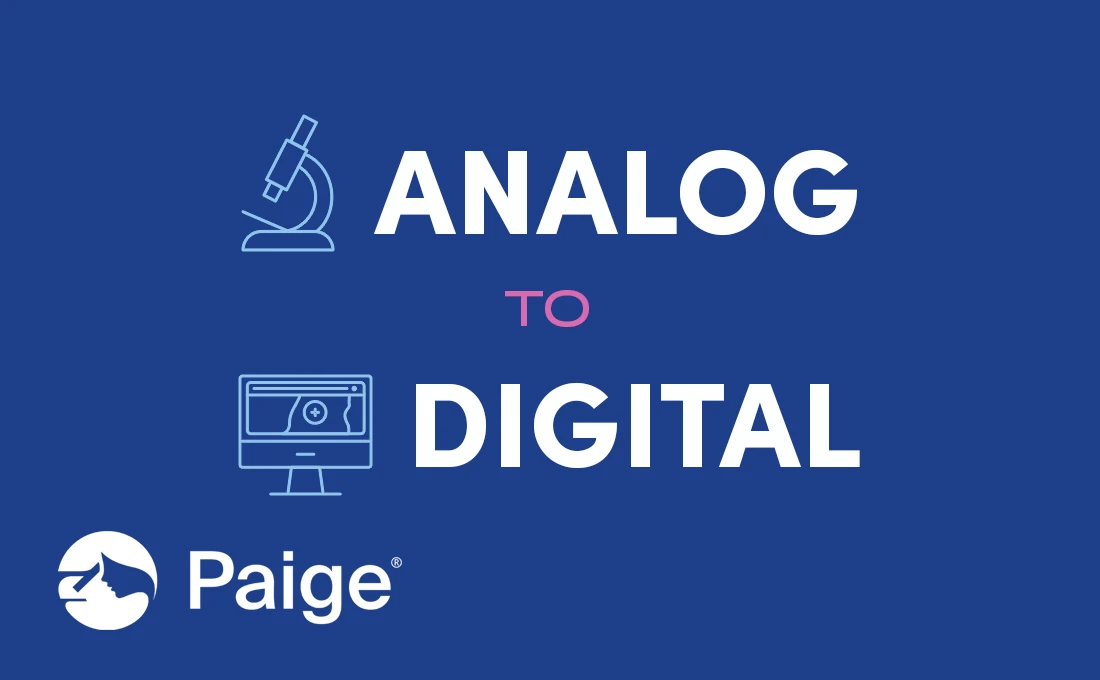Pathology workflows as we know them today are quite complex, requiring multiple team members, various lab equipment, and tedious manual processes. Yet despite the challenges this poses, they have remained largely unchanged over time. All the while, pathologists themselves have begun to face growing challenges, including shrinking team resources and rising demand for their services.
Digital pathology represents a singular solution to each of these pain points; by digitizing each step in the pathology workflow, labs can save time, resources, and costs, while pathologists can complete their diagnoses with greater efficiency and confidence. To understand just how impactful digital pathology can be, let’s compare today’s analog workflow to a digital one step-by-step:

- Case accessioning, tissue processing, and creating H&E slides begin the histopathologic process, both in traditional and digital labs. Cases are received, prepared to be mounted onto a slide, and stained with H&E to enable pathologist review.
- Today, hundreds of slides are then manually matched to the correct cases and those cases are distributed by hand to the correct pathologist, which is difficult and time consuming, and glass slides pose the risk of being lost or broken in the process. Slides that will be digitally scanned are instead barcoded to ensure they are automatically matched to the correct case, while digital case distribution eliminates misdelivery and the risk of slide damage.
- The order of case review in a traditional workflow is random and disorganized. Digital case management affords pathologists the ability to incorporate AI to help prioritize cases to enhance efficiency. For some labs, digital case management may also allow for better sub-specialization, as cases can easily be assigned or redistributed according to tissue type.
- Requesting second opinions typically slows down case review time and again poses risk of slide damage. Digital cases can be quickly shared and returned instantaneously, which also helps lab systems to better balance caseloads across sites or individual pathologists.
- Where additional staining may be required, pathologists are often left waiting hours or even days, and delays are compounded by the need to manually match newly stained slides with the original case file. In digitized cases, the additional stains are automatically assigned to the case as soon as they are scanned, and those newly stained slides can be reviewed as soon as possible.
- The onerous process of tumor board preparation traditionally requires tracking down individual slides and preparing notes, while digital slides can be tagged and annotated to lessen prep time.
- Accessing priors for review in a traditional workflow can take up to several days, especially when ordering slides to be pulled from an off-site archive. Digitization puts cases at pathologists’ fingertips to be updated or reviewed as needed.
- Case reporting is made much more seamless in an AI-assisted workflow, where the AI outputs pre-populate the reporting window into the LIS. This dramatically enhances pathologist efficiency to return results to the downstream cancer care team as quickly as possible.
Through the introduction of digital pathology, pathologists can eliminate nearly all of the pain points in analog workflows, so they can focus on the critical pieces of the diagnostic process. What’s more, digital pathology can offer benefits that are not possible in a traditional workflow, including AI-powered case prioritization and decision support. Labs who adopt digital pathology technologies today are leading the charge into the future of pathology and setting themselves up to better support the rest of the downstream care team, meaning better outcomes for patients.
Learn more about the power of digital pathology in our webinar from Dr. Juan Retamero.

